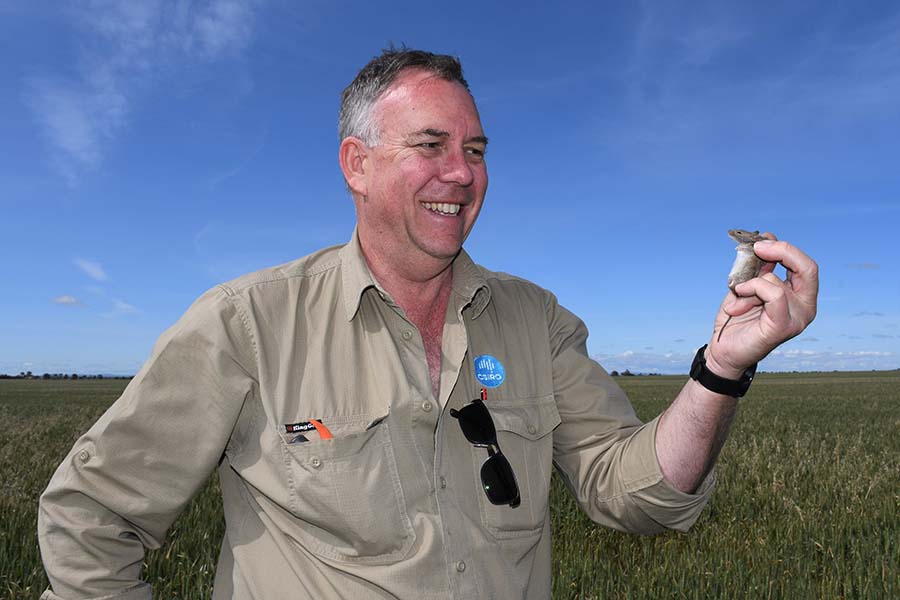Western Australian grain growers are being urged to ‘walk through paddocks’ to check for mouse activity and crop damage to determine whether they need to start baiting programs this season.
GRDC-supported mouse researcher Steve Henry says accurate monitoring and early spring management are key to reducing the risk of mouse damage in developing winter crops.
Mr Henry, a researcher from Australia’s national science agency, CSIRO, recommends growers assess paddocks proactively amidst reports of increased mouse numbers in WA’s Geraldton region.
“It is imperative growers get out of their vehicles, walk into their paddocks and get a good feel for what is going on in respect to current mouse numbers and activity,” he says.
“They need to be looking for signs of active burrows or crop damage. In cereals this may be chewing at the node or stem, which causes the head to fall over and from a distance can look like frost damage.

GRDC-supported mouse researcher Steve Henry is encouraging Western Australian growers to start monitoring winter crops for mouse activity and damage amidst reports of increased numbers in the Geraldton region. Image: GRDC
“In canola and legume crops, growers should be inspecting flowers and pods for damage. At the first sign of crop damage, growers need to be prepared to bait, preferably with 50g/kg zinc phosphide spread at 1kg/ha.
“The best chance of success is to bait before milky stage or before pod development. Mice may not eat baits if high quality seeds or pods are available.”
Mr Henry says controlling mouse populations during late winter and early spring will also reduce the number of mice when breeding starts as temperatures increased.
“If conditions are favourable – mice need food, shelter and moisture to thrive – the rate of population increase can be dramatic,” Mr Henry says.
“Mice start breeding when they are six weeks old, and litters of six to 10 pups are born every 19 to 21 days.
“So early detection and timely application of bait at the prescribed rate is critical for reducing the impact mice have on crops.”
Mr Henry also offers the following advice:
- Do not bait ahead of a significant forecast rain event. Ideally bait should be applied where there is a forecast for at least three to four dry days.
- Put mouse bait out before other pest/nutrient treatments. This gives mice the chance to encounter zinc phosphide bait before they discover any other new substances in a paddock and reduces the likelihood of a sub-lethal dose being consumed and therefore bait aversion.
- Do not mix mouse bait with snail/slug bait and do not apply mouse bait with a surface application of urea. Zinc phosphide can be scraped off the surface of the treated grain when agitated with other substances.
- Bait on the ground is more likely to be taken before mice climb plants to eat developing seed heads.
- Co-ordinate baiting strategies with your neighbours for area-wide management and highest impact.
GRDC has produced mouse chew cards which are a highly effective yet simple tool to measure activity in the paddock. These can be downloaded along with more information about mouse control via GRDC's Mouse Control page.
Mr Henry also encourages growers and advisers to report and map regional mouse activity using the MouseAlert website.
Despite considerable past and present investment ($6.9 million) in mouse-related research, development and extension (RD&E), GRDC recognises that mice continue to be a key constraint across the Australian cropping regions.
Studies have included searching for new tools and active ingredients, bait application strategies and ongoing monitoring and surveillance. Further investment in mouse-related RD&E is being undertaken to provide growers with new management tools and strategies for mouse management in the future.
More information: GRDC's mouse management page and CSIRO's mouse control.

























































